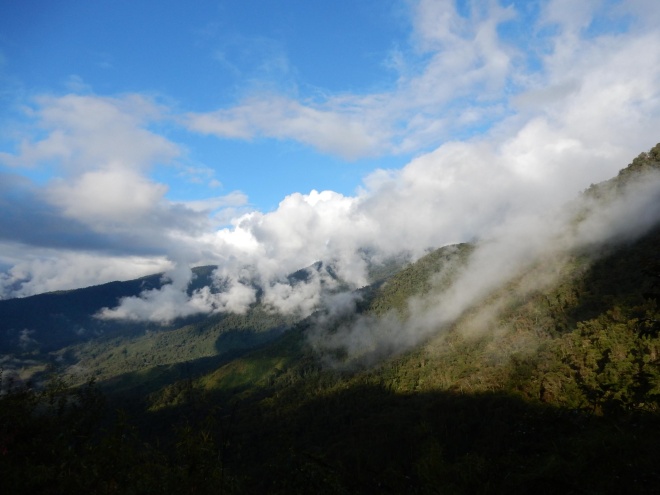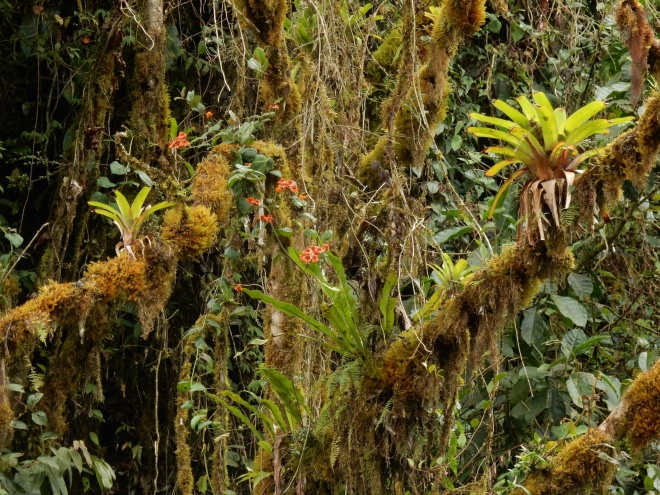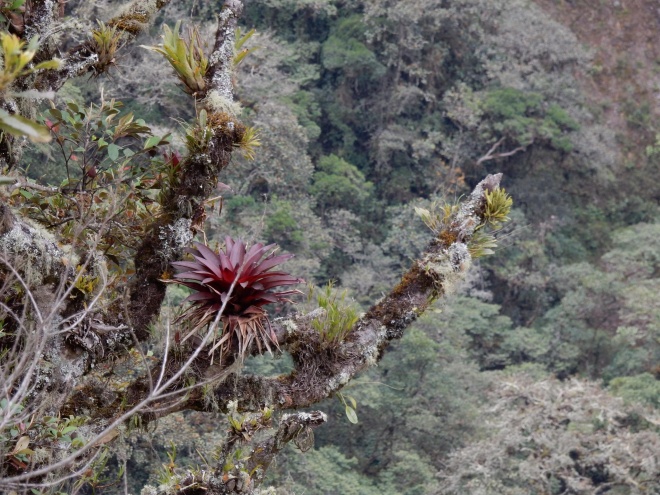Cloud forest, growing up to 3000 m elevetation, is home to an incredible number of rare and endemic species and a provider of essential resources such as water. The forest creates its own climate for species to survive. However, it is also highly threatened by deforestation, rising temperatures and changes in cloud cover.
Today only a few percent of Ecuador’s Pacific slope forest remains.
The images below illustrate the contrast between a tree inside its cloud forest microclimate and one exposed by deforestation.



